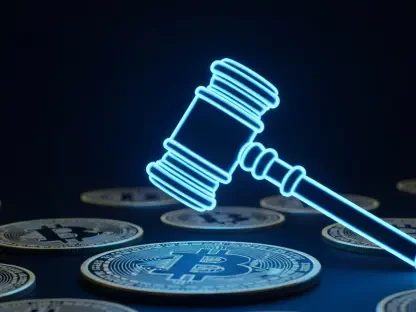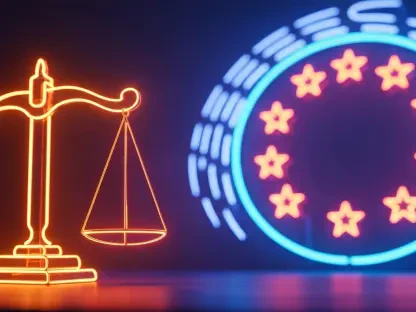Understanding the Crypto Industry Landscape
The cryptocurrency and digital assets sector stands as a towering force in modern finance, with a staggering market value surpassing $4 trillion as of July this year, underscoring the industry’s remarkable ascent driven by widespread adoption and technological innovation. From individual investors to institutional giants, the allure of digital currencies has reshaped economic interactions, positioning crypto as a cornerstone of financial evolution.
At the heart of this ecosystem lie diverse segments such as cryptocurrencies like Bitcoin and Ethereum, stablecoins designed for price stability, and non-fungible tokens (NFTs) representing unique digital assets. Major players, including exchanges like Coinbase and Binance, alongside blockchain technology providers, fuel this dynamic market. Blockchain, the decentralized ledger underpinning these assets, ensures transparency and security, cementing trust in an otherwise intangible domain.
Beyond technology, the societal acceptance of crypto signals its transition from a fringe concept to a legitimate economic player. Governments, businesses, and consumers increasingly recognize digital assets as viable tools for transactions, investments, and even cultural expression through NFTs. This growing acknowledgment reflects not just market growth but a profound shift in perception, setting the stage for deeper integration into global finance.
Evolution of Crypto Litigation: From Enforcement to Acceptance
Shifting Legal Battles: From Federal Scrutiny to Private Disputes
In recent years, the legal landscape for cryptocurrencies has undergone a dramatic transformation, moving away from intense federal scrutiny. Under previous administrations, aggressive enforcement actions by agencies like the Securities and Exchange Commission (SEC) dominated, often targeting tokens as unregistered securities. However, since the current administration took office, a noticeable decline in such federal actions has emerged, marking a pivotal shift in approach.
This change has paved the way for an uptick in private lawsuits and state-level investigations. Class action suits and disputes under state blue sky laws have become more prevalent, reflecting a maturing industry facing disputes akin to traditional sectors. Legal experts note that private litigation now often revisits familiar questions about asset classification but with evolving courtroom strategies.
A prime example lies in high-profile cases like Real v. Yuga Labs, Inc., involving Bored Ape Yacht Club NFTs. Defendants in such cases increasingly file early motions to dismiss, a tactic demonstrating growing confidence in challenging claims at the outset. This trend highlights how legal battles are adapting, focusing less on existential threats and more on specific transactional disagreements.
Regulatory and Political Influences on Litigation Trends
Political shifts have played a significant role in reshaping crypto litigation patterns, particularly with the current administration’s pro-crypto stance evident since the 2024 election cycle. This policy pivot has fostered an environment of reduced SEC enforcement, prioritizing regulatory guidance over punitive measures. Such a stance has been instrumental in alleviating the industry’s prior legal burdens.
Legislative developments further support this trend, with new laws like the GENIUS Act regulating stablecoins and discussions around the CLARITY Act, which may redefine token classifications as commodities rather than securities. Data indicates a sharp drop in SEC actions over the past year, juxtaposed against industry growth, with market projections suggesting continued expansion through 2027 under clearer rules.
Looking ahead, the normalization of litigation is anticipated to persist as regulatory frameworks solidify. Experts forecast that with sustained political backing and structured guidelines, crypto disputes will increasingly mirror standard commercial litigation. This evolving dynamic points to an industry no longer on the defensive but engaging in routine legal navigation.
Challenges in Crypto Litigation and Industry Growth
Despite progress, unresolved questions about digital asset classification as securities or commodities remain a significant hurdle. Courts and regulators often grapple with applying existing frameworks to novel technologies, creating inconsistency in legal outcomes. This ambiguity poses risks for market participants seeking predictability in their operations.
Technological complexities and state-level regulatory disparities compound these challenges. Blockchain’s decentralized nature can obscure accountability, while varying state laws create a patchwork of compliance obligations. Such uncertainties deter some investors and innovators, slowing broader adoption despite the industry’s potential.
Potential solutions include pushing for legislative clarity to standardize classifications and harmonize state regulations. Proactive legal counseling for crypto firms can mitigate risks by ensuring compliance with evolving standards. Additionally, industry self-regulation through best practices and transparent governance could build trust, addressing legal gaps while fostering sustainable growth.
Navigating the Regulatory Framework for Crypto
The regulatory environment for cryptocurrencies has seen significant shifts under the current administration, with executive orders explicitly supporting the industry’s development. This contrasts sharply with prior years of uncertainty, offering a more predictable landscape for businesses. Agencies now emphasize guidance over enforcement, a move welcomed by market stakeholders.
Compliance has emerged as a critical tool in reducing litigation risks, with firms investing heavily in aligning with federal and state laws. The GENIUS Act, for instance, provides a framework for stablecoin oversight, while ongoing legislative proposals aim to clarify broader asset categorizations. These measures collectively enhance operational stability for crypto entities.
Due process and clear regulatory guidance are vital in sustaining this environment. By ensuring fair treatment and transparent rules, regulators can foster trust among industry players and investors alike. This balanced approach not only minimizes legal conflicts but also encourages innovation, allowing the sector to thrive within defined boundaries.
Future Outlook: Crypto’s Legal and Market Trajectory
As litigation trends evolve, the crypto industry appears poised for further integration into mainstream finance, buoyed by supportive regulatory developments. The shift from existential legal battles to routine disputes suggests a maturing market ready to tackle sophisticated challenges. This trajectory hints at a future where digital assets are as commonplace as traditional investments.
Emerging blockchain technologies and changing consumer trust could act as disruptors, either accelerating or hindering growth. Innovations like layer-2 scaling solutions may enhance transaction efficiency, while global economic conditions could sway investor sentiment. Monitoring these factors will be crucial for predicting the sector’s direction over the coming years.
Growth areas such as mainstream adoption of digital assets and novel legal strategies to address disputes offer immense potential. Financial institutions exploring crypto offerings and law firms developing specialized practices signal a robust future. As these trends unfold, the industry stands to redefine economic interactions on a global scale, provided regulatory support persists.
Conclusion: A Legitimate Industry Moving Forward
Reflecting on the journey, litigation trends over recent years paint a picture of triumph for the crypto industry, as it transitioned from facing existential legal threats to engaging in routine commercial disputes. This evolution mirrors a broader societal and regulatory acceptance, affirming the sector’s place in modern finance. The reduction in federal enforcement and the rise of structured guidance marked a turning point that many had long anticipated.
Moving forward, stakeholders should prioritize advocating for comprehensive legislation to eliminate lingering ambiguities around asset classification. Collaboration between industry leaders and regulators could further streamline compliance, reducing friction in legal processes. Investing in education for both consumers and policymakers will also be key to sustaining trust and fostering innovation.
As the next chapter unfolds, exploring international regulatory harmonization could unlock new markets and opportunities. Firms should also consider leveraging advanced legal technology to anticipate and resolve disputes proactively. These steps, grounded in the lessons of past challenges, promise to propel the industry toward unprecedented stability and growth in the years ahead.









